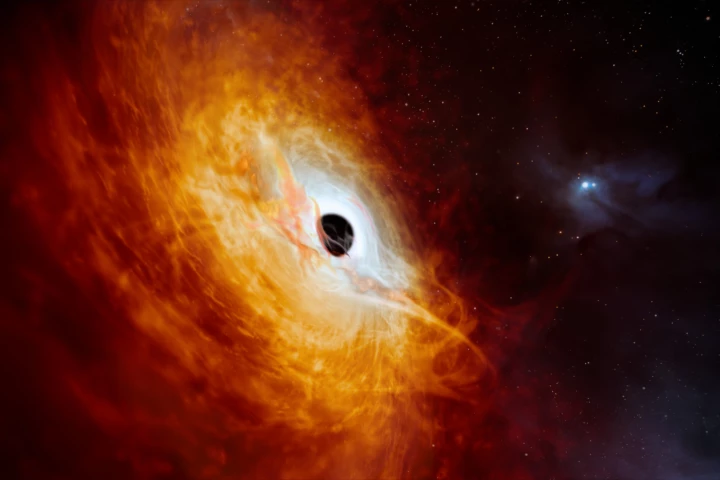Quasar
-
Astronomers have produced the largest 3D map of the universe, including an interactive VR video. In the process, they’ve uncovered some tantalizing hints that our understanding of physics, including the ultimate fate of the cosmos, could be wrong.
-
The brightest object in the known universe has just been found. It's a supermassive black hole with the mass of 17 billion Suns, and it swallows another Suns’ worth of material every day, making it also the fastest-growing black hole ever found.
-
Scientists using quasars as cosmic clocks have observed that when the universe was just a billion years old, time ran five times slower, helping to confirm Einstein's general theory of relativity and the expansion of the universe.
-
Astronomers have captured the biggest cosmic explosion ever detected. About 100 times bigger than the solar system and two trillion times brighter than the Sun at its peak, the mysterious miasma has remained visible for three years.
-
Astronomers have reclassified a radio galaxy in the sky after it was found to have redirected a jet of radiation straight towards Earth. This marks the first observation of a reorientation so dramatic that it changes the category a galaxy fits into.
-
Astronomers at Johns Hopkins University have created an interactive map of the universe, charting the positions and colors of 200,000 galaxies stretching from here to the very edge of the observable universe.
-
Japanese astronomers have discovered the echoes of a “dying” supermassive black hole. While the object is quiet now, the team spotted the signatures of two huge radio jets that indicate it only recently fell silent after a bright, active phase.
-
Astronomers have mapped out a huge invisible region of the galaxy next door. Hubble has detailed the size and structure of Andromeda's gas halo – and found that it’s already bumping up against that of the Milky Way, in advance of a cosmic collision.
-
A 20-year study of the sky has allowed astronomers to produce a comprehensive 3D map of the universe. A new analysis of this map has highlighted a mismatch in the Hubble Constant, and revealed when the expansion of the universe began to accelerate.
-
There are billions of tiny particles called neutrinos streaming through your body right now. But where did they come from? Researchers have now traced back some ultra-high energy neutrinos to their points of origin – radio flares from raging quasars.
-
Large clouds of dark matter have been indirectly detected before, but it should also form smaller clumps. Now Hubble observations have detected evidence of these small clumps for the first time, lending weight to a prevailing dark matter hypothesis.
-
Nowadays, the Milky Way is a pretty quiet galaxy – but just a few million years ago its central black hole sent off huge flares of radiation.
Load More











